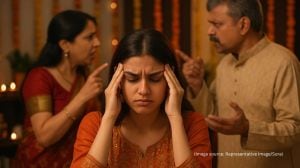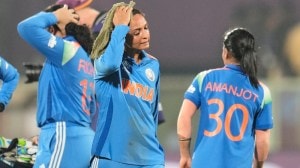Food for cloth
Perhaps, the best way of explaining fashion in simple terms would be to compare great couture to great cuisine! For doesn't any great occ...

Perhaps, the best way of explaining fashion in simple terms would be to compare great couture to great cuisine! For doesn’t any great occasion call for good food, good wine and good clothes, be it a celebration, wedding, a national event or simply a grand party. Thus wining and dining must go together with suitably, stylish attire, and just as the culinary arts are developed and altered by varied internal and external influences, so also clothes and the mode of dress gets affected by numerous factors. And as innovative "chefs" present new flavours and new food combinations, so do designers bring new "modes" of dress, introducing new colour combinations, cuts and structures. Both food and fashion evolve continuously. But the most important aspect of this is that like food habits, the mode of dress is either inherited — traditional or acquired — or cultivated. And just as some "alien" food habits break into and find a permanent niche in an otherwise tradition-bound country like India, so do forms of dress.For example, the way hot dogs, hamburgers and pizzas have found a permanent slot for themselves here, so have we a permanent penchant for blue jeans, chinos and T-shirts! Clearly this easy American style of casual dressing and eating has caught on forever, and is unbeatable! Blue jeans are now visible in the mountains of Nepal, valleys of Himachal and Kashmir, or the coasts of Bengal and Cochin; for its demand is universal. Obviously then, food habits and the style of dressing can be developed, varied or adapted, and cultural shackles can be gradually shaken off.
However, palates that have savoured the heady flavours of rich and spicy Mughal cuisine and are accustomed to the pungent curries of Southern India, cannot overnight learn to react favourably to the mild, creamy sauces of European origin, or the gently enticing aromatic flavours of foods from the far East or the distant West. But continuous exposure and experimenting with these foods will enable most people to cultivate or acquire a taste for someof this strange, unfamiliar cuisine. Similarly, the designer’s task (like the great chefs) is to draw his clients into cultivating a taste for unusual styles of dress, which will "enhance" his or her personality and give it "new dimensions" plus finesse!
But along with the main course, one is usually presented with options on the garnishes! This is the chef’s delight — decorating and dressing his speciality of the day, with appropriately-selected herbs, berries, fruit or vegetables. The presentation must be not only gastronomically perfect, but a visual treat on the table as well, inviting you to partake of it and simultaneously challenging your taste buds to explore a unique blend of flavours! Similarly, a designer’s presentations too would be incomplete without carefully selected accessories. These must necessarily be perfectly complimentary to the basic creation — so that each piece is a totally new experience in dress. A visual treat that is both intellectually and emotionally appealing. Thus bags,shoes, belts, hats, jewellery, cravats, should be used with the designer’s keen sense of balance and discretion so that there is an instant rapport between the wearer and the garment.
Like a grand banquet, a glittering `finale’ on the ramp holds you spellbound as you feast your eyes on the "spread" before you, with a choice of cuisines from the universe. You can choose your favourite "dish" or you can have them all!
Furthermore, culture is a strange phenomenon — nurturing and conditioning on the one hand, while strangely smoothening and even overpowering, on the other hand. By overcoming this basic "obstacle" and inviting people to step outside of it, the designer can successfully carry the wearer into an arena that is daringly different, mysteriously alluring, or wildly futuristic, whether Italian in inspiration, Grecian in concept or flamboyantly French in flavour. In fact, this is the designer’s challenge. And whether outlandishly original, wildly outrageous or subtly underplayed / controlled, it isthe designer’s imagination, his sense of aesthetics, his eye for line and colour that can bring a personality onto a platform from where he/she can project their image successfully and comfortably. The designer’s task is also to ensure that his client exudes confidence in his appearance for that is the keynote to great dressing anywhere in the world.
Finally, the designer’s aim is not merely to produce superb "silhouettes", but rather to provide a complete "lifestyle" with the emphasis on detail and finish. It is not really necessary for the Indian woman to shed the `saree’ or her security blanket — the `dupatta’, and don the `jacket’ to look great. A designer must be versatile in his approach and be able to handle all types of clothes with ease and flair. Palazzo’s or trousers, churidars or tights, flowing ball gowns or lehenga’s it is the designer’s concept and technique that can transform it into `Hi Fashion’. Ultimately if fashion today is synonymous with designer labels, thencouture creativity must be measured with an international yardstick and universal norms. After all couture "magic" is irresistible and it is up to the designer to make it cast its spell over the world…






- 01
- 02
- 03
- 04
- 05

























